February Macro Matters
A MACRO PHOTOGRAPHER’S DIARY FEBRUARY 2021
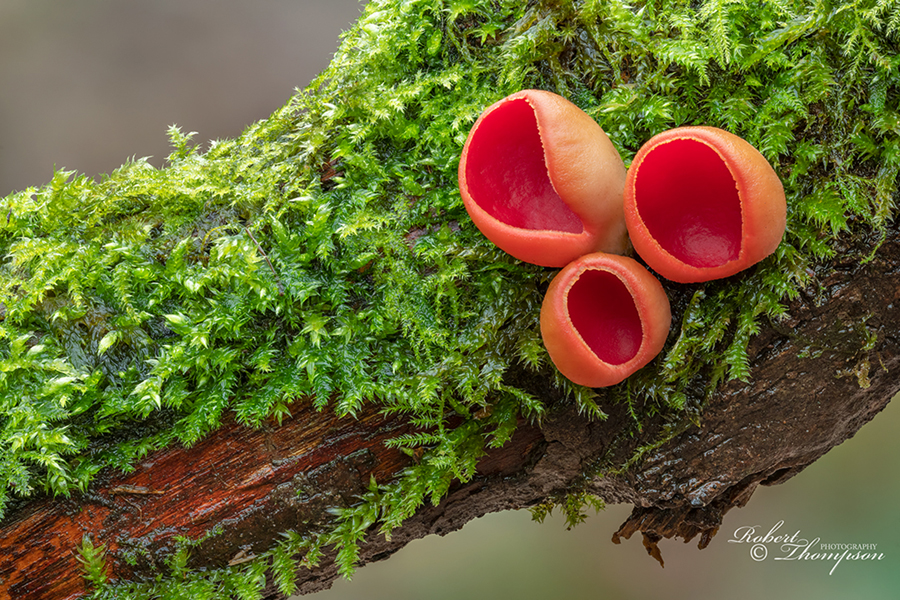
Scarlet Elf Cup Sarcoscypha coccinea
February is the month when we begin to notice a little more brightness in the daylength and the early signs of spring are beginning to show. It also is the month in which nature begins to stir after its long hibernation.
Using a long lens and an extension tube, I was able to isolate this small group from a cluttered background, which would have been a distracting element in the final composition. I also made use, in this case, of the rule of thirds in terms of placement of the subject. However, I do not necessarily adhere to this principle in every situation, but use my own judgement as to what looks best for the subject.
Nikon D850, 300mm 2.8 telephoto lens + extension tube @ f/8, ISO 200, tripod.
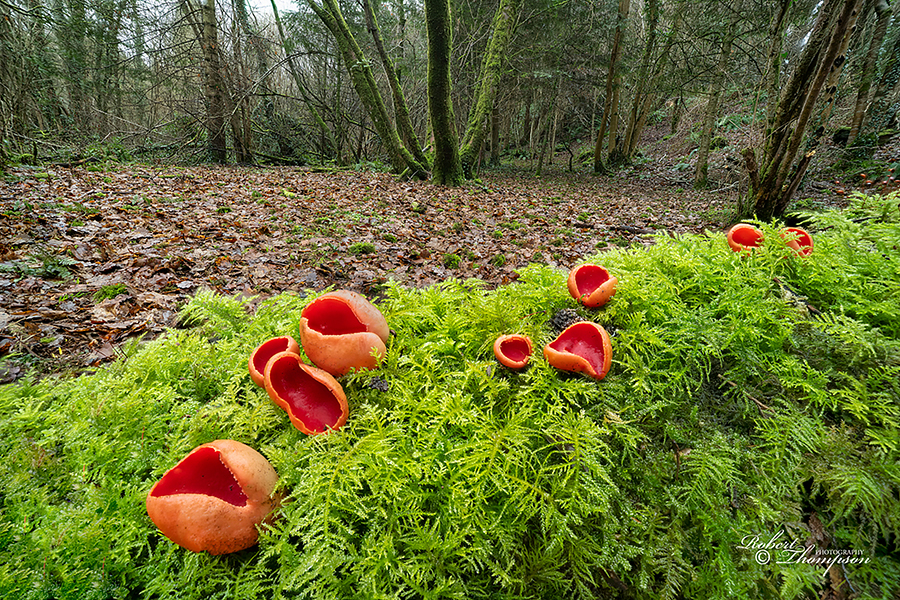
Scarlet Elf Cup Sarcoscypha coccinea
In this image, I have chosen to illustrate the subject in relation to its environment. It’s important to be open-minded when trying to portray your subject and not shoot every image from the same viewpoint or using the one lens. Including the environment in your composition tells a story about the subject and the ecosystem it exists in. In this case, I used the Laowa 15mm wide-angle macro lens, which is ideal for this type of image.
Nikon D850, Laowa 15mm wideangle macro lens, @ f/11, ISO 200, tripod.
In these challenging times, travel is greatly reduced and we have to make use of and explore our adjacent surroundings. There is a small, woodland habitat situated in a river glen near my home. It’s a good place to relax and walk, but it also has many interesting species, which provide excellent photographic subjects throughout the year. Early February sees the emergence of the Scarlet Elf Cup fungi Sarcoscypha coccinea. They appear in numbers on decaying branches and dead mossy logs scattered on the woodland floor. I have taken many pictures of them over the years, but I can’t resist adding to my collection every year.
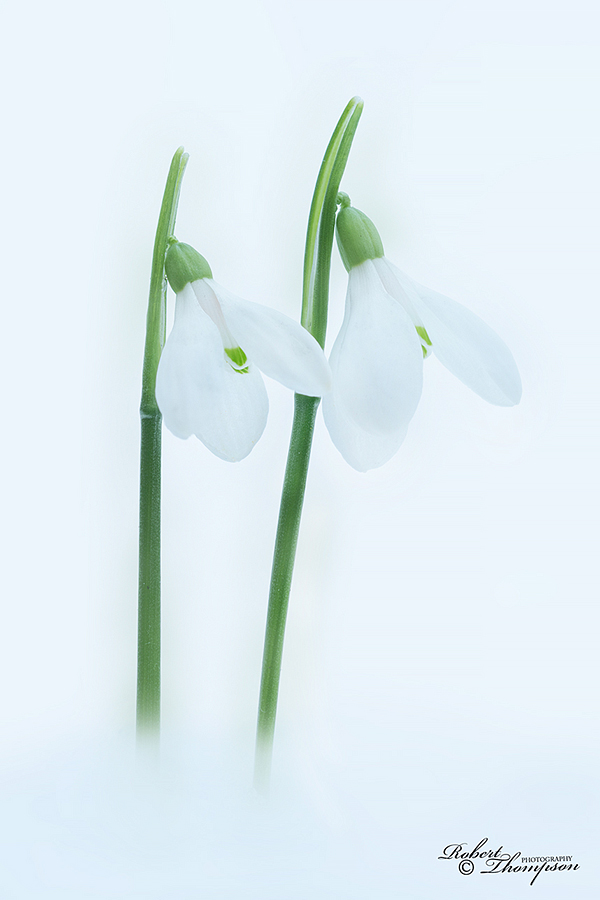
Snowdrop Galanthus nivalis
Snowdrops are one of my favourite flowers. In this case, I used a long lens to blur the foreground snow, while at the same time selecting a wider aperture to keep the background well diffused. Exposure is also important with snow, I opened up two stops, pushing the histogram as far to the right as I could without blowing the highlights.
Nikon D850, 300mm 2.8 lens, + extension tube @ f/5.6, ISO 200, tripod.
February is also one of the most flowerless months of the year. After the long, dark nights of winter, snowdrops herald the changing seasons and tells us that spring is on its way. There are many places to see and photograph these delightful flowers. Snowdrops are often associated with purity and in ancient times were most evident around religious sites and burial grounds. However, this year, as a result of lockdown, I made more use of my time at home exploring my garden and nearby areas, which in normal times I seldom get the chance to do. It also brings back fond memories of my early days as an aspiring nature photographer when these habitats were my frequent haunts. During the recent frost and snow, I was able to photograph some of the plants in my garden that took on a new look with the icy conditions.
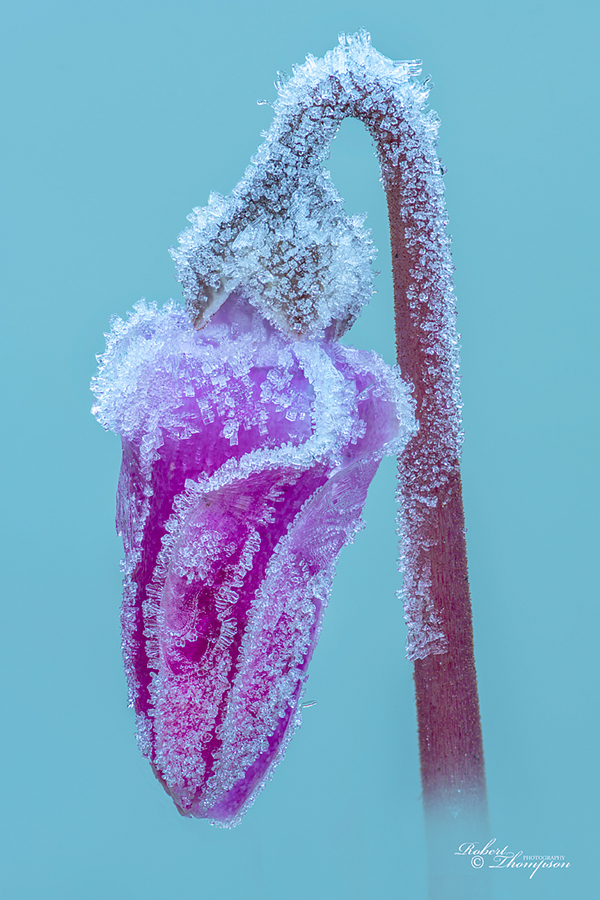
Frosted Cyclamen flower Cyclamen hederifolium
Just exploring around the garden early in the morning, before the sun and temperature rises, provided several possible images that in ordinary circumstances would not necessarily produce anything exceptional. The extra dimension of frost takes them to another level in my opinion.
Nikon D850, 200mm micro nikkor lens @ f/11, ISO 200, tripod.
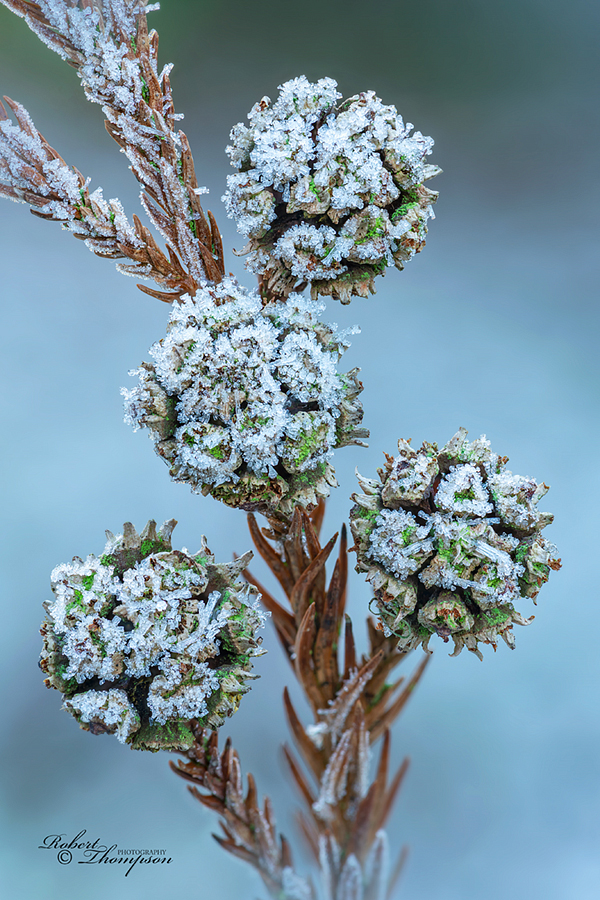
Japanese Cedar Cryptomeria japonica dead cones
I had some dead branches of this tree lying in the corner of the garden. The frost on the tops of the cones is what made the photo more interesting. They were lying propped up against a log. I adopted a very low-angle position to keep the subject as parallel to the camera as possible and allow the distant background to blur.
Nikon D850, 200mm micro nikkor lens @ f/11, ISO 200, tripod.
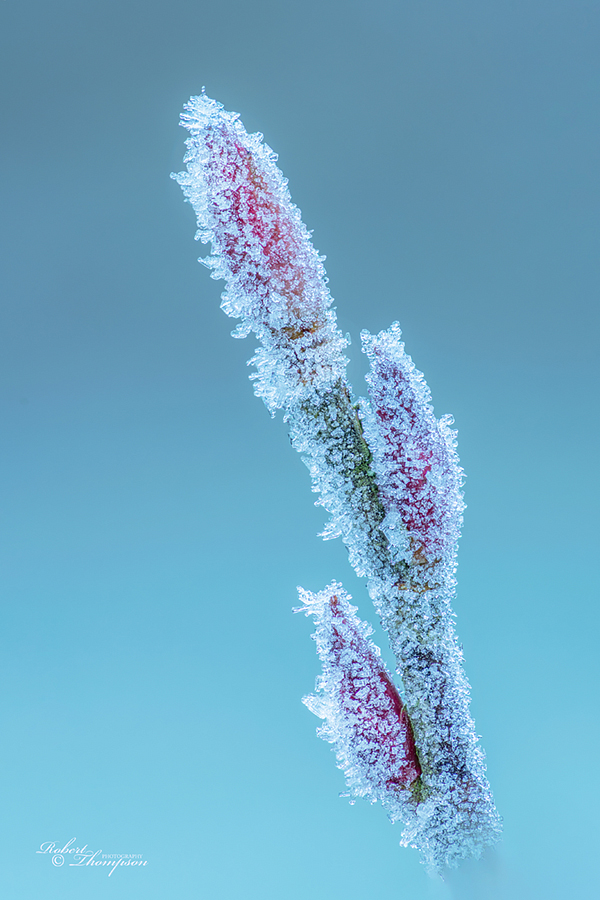
Frozen Ribes buds
I have a few Flowering Currant shrubs in the garden. All were coated in frost crystals, it was just a case of selecting one that would allow me to isolate it from the others to keep the background well diffused!
Nikon D850, 200mm micro nikkor lens @ f/11, ISO 200, tripod.
Late January and February are also an important time for frogs. Local garden ponds and ditches are the ideal places to search. Frogspawn is laid in batches with the developing tadpoles taking around 14 weeks to reach maturity and become adult frogs. Exploring these nearby water-bodies will present opportunities to photograph these fascinating events. Don’t be put off if some ponds that do not contain spawn? Chances are, they were not suitable, to begin with, hence the reason there is no spawn present. Frogs tend to avoid those water habitats where there are newts present.
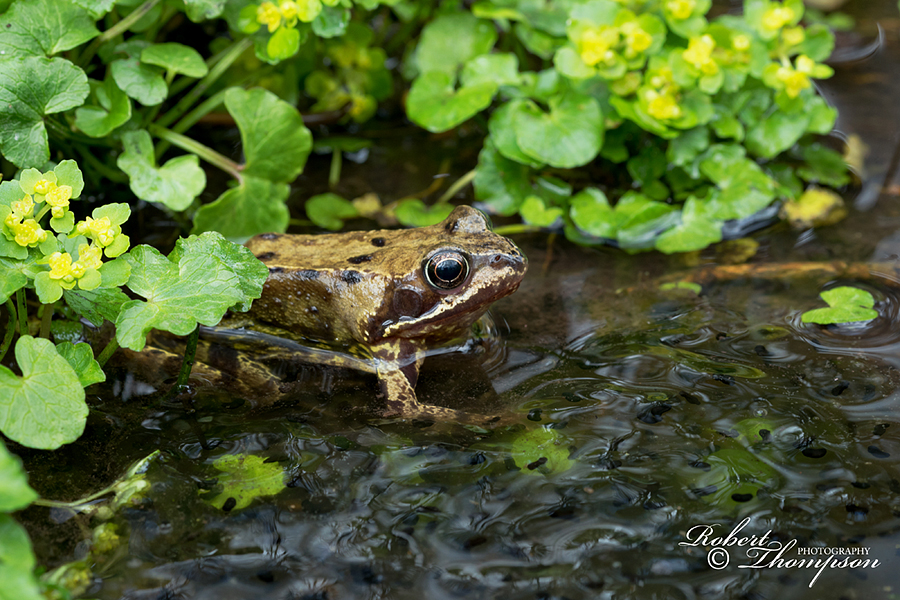
Common Frog Rana temporaria with spawn
Frogs make great subjects when there is little else about. Patience is the key here and moving in slowly trying not to spook your quarry. In this case, I was able to capture the adult and the spawn. Habitat selection is also important, try to select small water-bodies, which make it much easier to get close to the subject.
Nikon D850, 200mm micro nikkor lens @ f/11, ISO 100, tripod.

